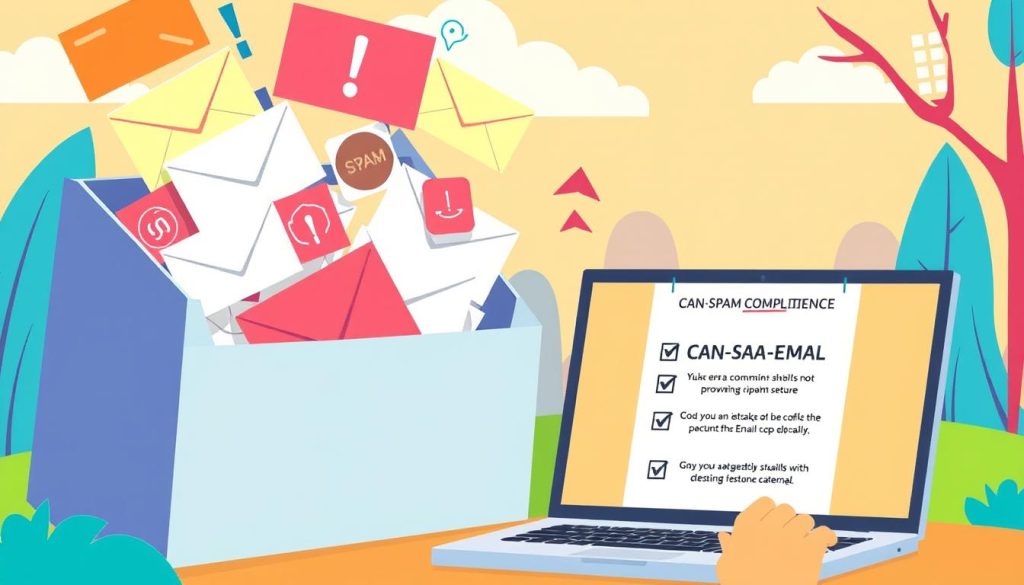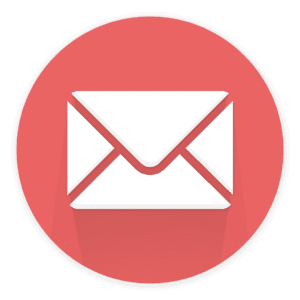In the world of business brokerage, cold emails are key for getting leads and making connections. As a broker, knowing how to write great cold emails can make you stand out. This article will show you advanced cold email strategies for brokers. It will help you improve your email outreach and increase your success.
We’ll cover everything from why cold emails matter in brokerage to writing catchy subject lines and personalized content. You’ll learn how to build targeted email lists, send emails at the best times, and track your email’s performance. We’ll also share common mistakes to avoid and suggest CRM tools for better email management.
Real-world examples and case studies will show you how successful cold email campaigns work. These examples will give you lessons to use in your own email outreach.
Key Takeaways
- Understand the crucial role of cold emails in business brokerage for lead generation
- Learn to craft compelling subject lines and personalized email content
- Discover strategies for building targeted email lists and timing emails effectively
- Gain insights into analyzing email performance and refining outreach strategies
- Explore real-world examples of successful cold email campaigns for business brokers
Understanding Cold Emails in the Brokerage World
In the fast-paced world of business brokerage, cold emails are a powerful tool. They help connect with potential clients and open new opportunities. But what are cold emails, and why are they key for business brokers?
Cold emails are messages sent to people or businesses you don’t know. Unlike warm emails, which go to friends or referrals, cold emails start new conversations. For business brokers, they are a crucial way to generate leads. They show off the broker’s skills and what they offer to potential sellers.
In a competitive market, standing out is crucial. Good cold email strategies can make a big difference. By using catchy subject lines, making messages personal, and sharing valuable insights, brokers can grab potential clients’ attention. Cold emails help brokers:
- Reach more people
- Show off their knowledge and skills
- Build trust with potential sellers
- Get new leads and grow their client base
The Power of Personalization
Personalization is key to a successful cold email campaign. Tailoring messages to each recipient’s needs and interests boosts engagement and response. Personalization can include:
- Addressing the recipient by name
- Mentioning their company or industry
- Highlighting their challenges
- Offering solutions or insights
“Personalization is not about first/last name. It’s about relevant content.”
– Dan Jak
By researching and understanding their audience, brokers can write emails that really connect. They show they care about the recipient’s success.
In the next sections, we’ll explore more strategies and techniques for mastering cold emailing. This will help brokers grow and succeed.
Crafting the Perfect Cold Email
Creating effective cold emails is key for business brokers. It helps them connect with potential clients. A well-crafted cold email grabs attention and boosts lead generation and deal closure.
Subject Lines that Captivate
The subject line is your email’s first impression. It decides if your email gets opened or deleted. Here are tips for catchy subject lines:
- Keep it short and sweet, ideally under 50 characters
- Use actionable language that creates a sense of urgency
- Personalize the subject line with the recipient’s name or company
- Avoid using spammy words like “free” or “discount”
“35% of email recipients open an email based on the subject line alone.”
Personalization Techniques
Personalization makes your cold emails unique. Tailoring your message shows you care about the recipient’s needs. Here are some personalization tips:
| Technique | Description |
|---|---|
| Use the recipient’s name | Address the recipient by their first name to create a personal connection |
| Mention their company | Show that you’re familiar with their business and understand their industry |
| Reference recent news | Demonstrate that you stay up-to-date with their company’s developments |
| Highlight shared connections | Mention any mutual contacts or shared experiences to build rapport |
By using great subject lines and personalized content, you can create an effective cold email. It will resonate with your audience and encourage engagement. Focus on adding value and building real connections, not just making a sale.
Building a Targeted Email List
Creating a targeted email list is key for business brokers. It helps them make the most of their cold email campaigns. By focusing on the right clients and using the best tools, you can get a list of quality leads. These leads are more likely to respond to your emails.
Identifying Your Ideal Clients
To create a targeted email list, start by figuring out who your ideal client is. Think about:
- Industry and niche
- Company size and revenue
- Geographic location
- Decision-maker titles and roles
- Pain points and challenges
Understanding your ideal clients helps you tailor your messages. This way, you can speak directly to their needs and goals.
Tools for Finding Prospects
After knowing your ideal client, use prospecting tools to find leads. Some top tools include:
| Tool | Description |
|---|---|
| LinkedIn Sales Navigator | Advanced search and filtering to find decision-makers in your target industries |
| ZoomInfo | Comprehensive database of business contacts with verified email addresses and phone numbers |
| Hunter.io | Email finder and verification tool to ensure your messages reach valid inboxes |
| Clearbit | Enrichment platform to gather additional insights on prospects and personalize outreach |
Investing time in building a high-quality, targeted email list is crucial for the success of your cold email campaigns. By focusing on your ideal clients and using the right prospecting tools, you can significantly increase your chances of generating meaningful conversations and closing more deals.
Keep your email list updated and accurate. This will help you get the most out of your cold email efforts. It also makes you a trusted business broker in your market.
Timing Your Cold Emails Effectively
Timing is key in cold emailing. The right time can boost open rates and conversions. As a business broker, knowing the best times to send emails is crucial.
Studies show Tuesdays, Wednesdays, and Thursdays are the best days to send cold emails. These days get more engagement than Mondays and Fridays. But, the best times can change based on your industry and audience.
Best Times to Send Emails
Research points to sending emails between 10 a.m. and 11 a.m. or 1 p.m. and 2 p.m. in the recipient’s time zone. These times match common workday breaks. This increases the chance of your email being seen and acted upon.
Remember to consider your prospects’ time zones when scheduling emails. If they’re in different regions, send emails when they’re most likely to check their inbox. Ignoring time differences can make your emails less effective.
A/B Testing for Optimal Results
To find the best send times, A/B testing is vital. It involves sending emails at different times and comparing their performance. This helps you discover the best timing for your campaigns.
When testing, keep other factors like subject lines and content the same. This way, you can see how timing affects your results. Use the insights from your tests to refine your email schedule and improve your cold email success.
Writing Engaging Email Content
Creating compelling email content is key for business brokers to connect with sellers. Focus on making your emails engaging and relevant to your audience. This can help you get more leads and close deals.
To write great cold emails, start with a clear and simple structure. Begin with a hook that grabs the reader’s attention and shows the value you offer. Use personal touches, like mentioning their business, to show you’ve done your homework.
Structuring Your Message
Here’s a formula for successful cold emails:
- Compelling subject line
- Personalized greeting
- Brief intro of yourself and your expertise
- Identify their pain points or goals
- Explain how you can help
- Clear call-to-action
Following this structure makes your emails focused and valuable. This increases the chance of getting a positive response from potential sellers.
Using Clear Call-to-Actions
A clear call-to-action (CTA) is vital for getting people to act. Your CTA should be direct, actionable, and simple to understand. Here are some good examples:
- “Schedule a 15-minute call to discuss your business goals”
- “Reply to this email to receive a free business valuation report”
- “Visit our website to learn more about our brokerage services”
| CTA Type | Example | Conversion Rate |
|---|---|---|
| Phone Call | “Let’s discuss your business goals over a quick call” | 8-10% |
| Email Reply | “Reply to this email for a free consultation” | 5-7% |
| Website Visit | “Explore our success stories at www.example.com” | 3-5% |
As business coach and author Marie Forleo said,
“The key to writing engaging content is to focus on providing value to your audience, not just promoting your own agenda.”
Remember this when writing cold emails. It helps you create content that truly connects with potential sellers.
Following Up on Cold Emails
After sending your first cold email, it’s important to keep the conversation going. Follow-up emails are key to nurturing leads and closing deals. By being persistent and adding value, you can engage prospects and boost your success rate.
Crafting Effective Follow-Up Emails
When writing follow-up emails, focus on adding value to the prospect’s business. Share insights, trends, or case studies that show your expertise. Keep your messages short, personalized, and focused on the prospect’s needs. Use a polite and professional tone and create a sense of urgency to get a response.
Consider adding these elements to your follow-up emails:
- Remind the prospect of your previous email and the value you can offer
- Provide additional resources or information that address their pain points
- Ask open-ended questions to encourage engagement and gather insights
- Offer a clear call-to-action, such as scheduling a call or meeting

When to Reach Out Again
Figuring out the right time and frequency for follow-up emails is crucial. You want to be persistent but not spammy. Here are some guidelines for your outreach cadence:
| Prospect Engagement Level | Follow-Up Frequency |
|---|---|
| No response after initial email | 3-5 days |
| Opened email but no response | 5-7 days |
| Responded but no further engagement | 7-10 days |
“The fortune is in the follow-up. Don’t give up too soon on your prospects, as persistence pays off in the long run.”
By consistently following up and adding value, you can build trust and convert more leads. Remember to track your email performance and adjust your strategies to keep improving.
Analyzing Email Performance
To make your cold email campaigns better, it’s key to track and analyze important email analytics. By looking at performance metrics, you learn what works and what doesn’t. This helps you improve your outreach efforts.
Checking your email analytics often helps you make data-driven strategies. This way, you can get better results. Important metrics to watch include:
- Open rates: The percentage of recipients who opened your email
- Click-through rates: The percentage of recipients who clicked on links in your email
- Response rates: The percentage of recipients who replied to your email
- Conversion rates: The percentage of recipients who took a desired action, like scheduling a call
Tracking Key Metrics for Success
To track these performance metrics well, use email marketing software or a CRM system. These tools offer detailed reports and dashboards. They help you see how your campaigns are doing over time.
“Without data, you’re just another person with an opinion.” – W. Edwards Deming
By regularly looking at your email analytics, you can find trends and areas to improve. This helps you make smart decisions about your cold email strategy.
Adjusting Strategies Based on Data
With a clear view of your performance metrics, refine your strategy. For instance, if some subject lines or email templates do better, use those more in future campaigns.
Also, data-driven strategies can help you time your emails right, how often to send them, and who to send them to. By always testing and adjusting based on email analytics, you can boost your cold email success. This leads to more deals as a business broker.
Avoiding Common Mistakes
When sending cold emails for your business brokerage, it’s crucial to sidestep potential pitfalls. These could derail your outreach efforts. By steering clear of common email mistakes, you can enhance the effectiveness of your campaigns. This helps maintain a professional reputation.
Pitfalls to Watch Out For
One big blunder in cold emailing is using spammy or generic subject lines. Instead, craft compelling, personalized subject lines that grab the recipient’s interest. Also, failing to tailor your message to the individual prospect can lead to poor engagement. Take the time to research your target audience and customize your content accordingly.

Another mistake to avoid is bombarding prospects with excessive follow-ups. While persistence is important, striking the right balance is key. Aim for no more than two or three well-timed follow-ups, allowing ample space between each message.
How to Stay Compliant
Maintaining CAN-SPAM compliance is essential when conducting email outreach. This federal law sets guidelines for commercial email. It establishes requirements for message content, sender identification, and opt-out mechanisms. Familiarize yourself with these regulations to ensure your cold emails adhere to legal standards:
- Include a clear, honest subject line that accurately reflects the email’s content
- Provide your business’s physical address in the email footer
- Give recipients an easy way to opt out of future communications
- Honor opt-out requests promptly, within 10 business days
By following email best practices and staying compliant with regulations, you can build trust with potential clients. This avoids legal repercussions. Regularly review your cold email strategies to ensure they align with industry standards and legal requirements.
| Do | Don’t |
|---|---|
| Personalize subject lines and content | Use generic, spammy language |
| Provide clear opt-out instructions | Hide or omit unsubscribe links |
| Honor opt-out requests promptly | Continue emailing after opt-out |
| Include your business’s physical address | Fail to identify yourself clearly |
“Email outreach is a powerful tool for business brokers, but it must be wielded responsibly. By avoiding common mistakes and adhering to best practices, you can unlock the full potential of cold emailing while maintaining a stellar reputation.”
Leveraging CRM Tools for Email Management
Managing your email outreach as a business broker can be tough. Customer relationship management (CRM) tools help a lot. They make your email management smoother and boost your sales automation.
Benefits of Using CRM Systems
Using a CRM system has many benefits for business brokers:
- Centralized lead tracking and management
- Personalized email templates at scale
- Automated follow-up sequences
- Performance analytics and reporting
CRM tools help you keep track of every lead. You can see every interaction, from the first email to the final deal. They also let you sort your email lists for better targeting.
Recommended CRM Tools for Brokers
Choosing the right CRM can be hard. Here are some top picks:
- Salesforce: A full-featured CRM for sales automation and email management.
- HubSpot: A platform that combines CRM, marketing, and sales tools. It’s great for streamlining operations.
- Pipedrive: A CRM made for sales teams. It’s easy to use and integrates well with email.
“Implementing a CRM system has been a game-changer for our brokerage. It has allowed us to scale our email outreach efforts while maintaining a personal touch with each prospect.” – Sarah Johnson, Successful Business Broker
When picking a CRM, think about ease of use, customization, and integration with your email. The right CRM tools can elevate your email game and help you close more deals.
Word count: 288
Real-World Examples of Success
To truly understand the power of cold emailing in business brokerage, it’s essential to examine real-world case studies. These examples showcase the strategies and techniques that have led to successful email campaigns for brokers. By diving into the details of these case studies, we can extract valuable lessons and insights.
Case Studies of Effective Cold Emails
One noteworthy case study involves a business broker who targeted a specific niche market with personalized cold emails. By conducting thorough research on each prospect and crafting emails that spoke directly to their unique needs, the broker was able to generate a 30% response rate. This led to several high-value deals and a significant boost in revenue.
Another successful cold email campaign focused on building relationships rather than making immediate sales pitches. The broker provided valuable industry insights and resources in their initial emails, establishing trust and credibility with potential clients. Over time, this approach resulted in a steady stream of qualified leads and closed deals.
Lessons Learned from Successful Campaigns
Analyzing these case studies reveals key lessons for business brokers looking to improve their own cold email outreach. One critical takeaway is the importance of targeting the right audience with relevant, personalized messages. By segmenting email lists and tailoring content to specific prospect needs, brokers can significantly increase engagement and conversion rates.
Another valuable lesson is the power of persistence and follow-up. Successful brokers understand that not every cold email will generate an immediate response. By implementing a strategic follow-up sequence, they can keep their business top-of-mind and eventually convert prospects into clients.
By studying these real-world examples and applying the lessons learned, business brokers can optimize their own cold email strategies for maximum impact. Whether it’s refining subject lines, personalizing content, or improving follow-up techniques, these insights provide a roadmap for success in the competitive world of business brokerage.






